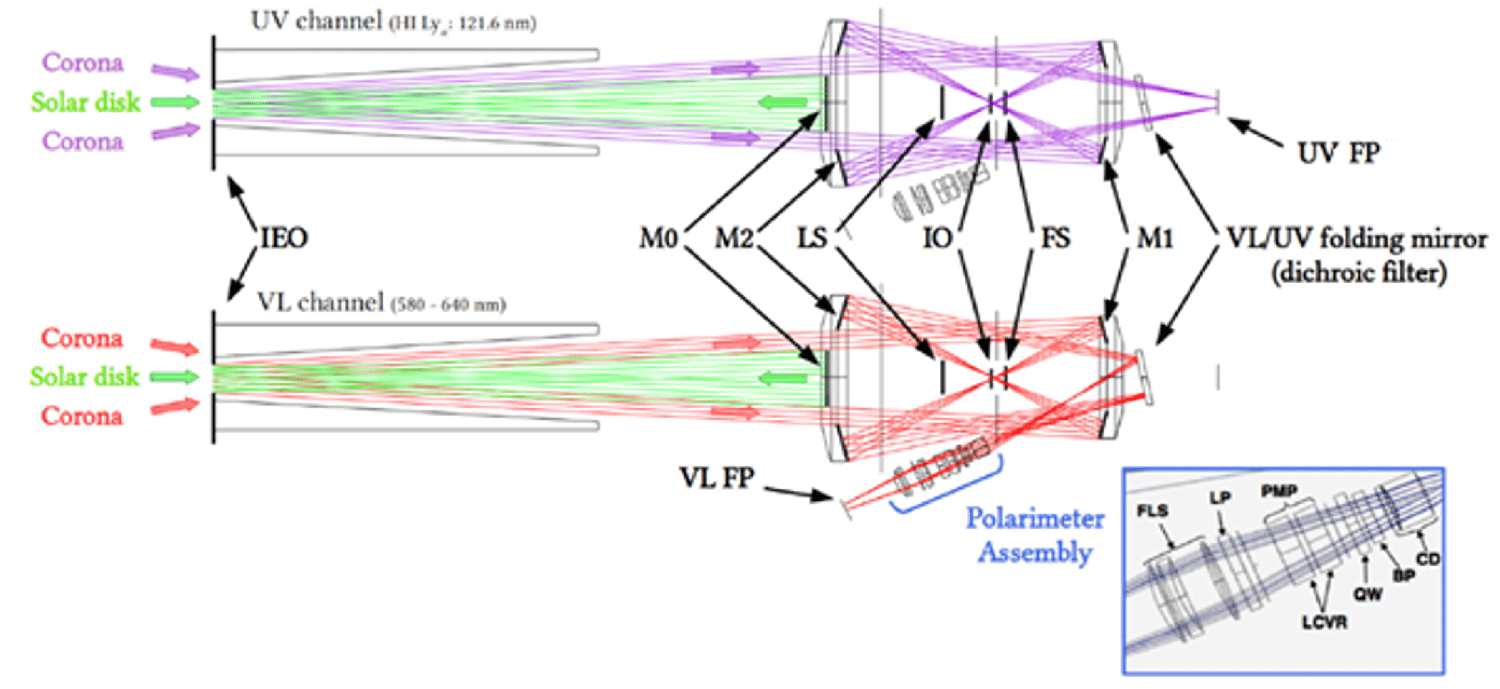- 1CNR-IFN Padova, Via Trasea 7, 35131 Padova, Italy
- 2INAF-OATO, Via Osservatorio 20, 10025 Pino Torinese (To), Italy
- 3Dipartimento di Fisica, Università della Calabria, via Pietro Bucci, 87036 Arcavacata di Rende (Cs), Italy
- 4Dipartimento di Scienze e Tecnologie, Università di Napoli ‘Parthenope’, CDN IC4, 80143 Naples, Italy
- 5Dipartimento di Fisica ed Astronomia - Università degli Studi di Firenze, Via G. Sansone 1, 50019 Sesto Fiorentino (Fi), Italy
Throughout the initial four years of the operative mission, METIS coronagraph [1] carried out numerous scientific observations, including some focused-on comets. Among the observed cometary targets, there are periodic comets, like 2P/Encke, sunskirters, such as 96P/Machholz (see Figure 1), some sungrazers [2] and even a long period comet, the C/2021 A1 (Leonard) [3], having an orbital period of approximately 80,000 years. Although many of these observations, especially of periodic comets, were specifically planned, some comets were also identified a posteriori on images collected for solar corona studies.

Figure 1: UV channel observation for the 96P/Machholz sunskirter comet during its transit in the METIS Field of View on January 30, 2023.
Metis is the coronagraph onboard SolO and it has been conceived to acquire images of the solar corona both in linearly polarized visible light (VL, 580–640 nm) and narrow-band (±10 nm) ultraviolet (UV) around the HI Lyman-a (121.6 nm) spectral line. Metis is the first coronagraph able to perform such simultaneous observations.
The instrument is designed to image the structure and dynamics of the full solar corona in an annular FoV covering the range from 1.6° to 2.9°, with a plate scale up to 10 “/px in VL channel and up to 20”/px in UV. Owing to the eccentricity of the spacecraft orbit, the heliocentric distances imaged are from 1.6 to 3.1 solar radii at minimum perihelion distance (0.28 au), up to the range from 6.0 to 12.0 solar radii when the spacecraft is around 1.0 au. A sketch of the raytrace of the two channels of the Metis coronagraph, i.e. the UV and VL, is given in Figure 2.

Figure 2: Metis layout. On the top: the UV path. On the bottom: the VL path [4].
The ability of METIS to perform simultaneous imaging in a narrow UV band around HI Ly-alpha and in the visible wavelength range can be highly impactful in cometary studies. UV images enable the study of neutral hydrogen coma morphology and the estimation of the water outgassing rate from the comet nucleus. Conversely, visible polarization images allow the derivation of comet parameters correlated with the physical properties (distribution, density, size, ...) of the dust grains in the coma.
In this work, a summary of the activities and main results obtained so far is presented, highlighting some original results obtained from METIS comet observations and sharing some valuable “lessons learned" from these four years of activity.
Acknowledgements
Solar Orbiter is a space mission of international collaboration between ESA and NASA, operated by ESA. Metis was built and operated with funding from the Italian Space Agency (ASI), under contracts to the National Institute of Astrophysics (INAF) and industrial partners. Metis was built with hardware contributions from Germany (Bundesministerium für Wirtschaft und Energie through DLR), from the Czech Republic (PRODEX) and from ESA.
References
[1] Antonucci et al, A&A 642, A10 (2020).
[2] Bemporad et al, A&A 680, A90 (2023).
[3] Corso et al, EPSC2022-901 (2022)
[4] Fineschi, S. et al., Exp. Astron. 49, 239-263 (2020).
How to cite: Corso, A. J., Da Deppo, V., Giordano, S., Nisticò, G., Bertini, I., Bemporad, A., Chioetto, P., and Romoli, M.: The Metis contribution in cometary science: an initial assessment of the first four years of activities, Europlanet Science Congress 2024, Berlin, Germany, 8–13 Sep 2024, EPSC2024-1261, https://doi.org/10.5194/epsc2024-1261, 2024.